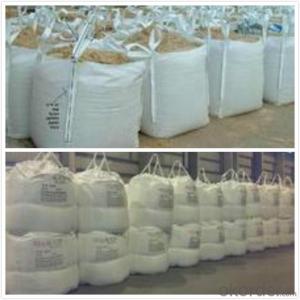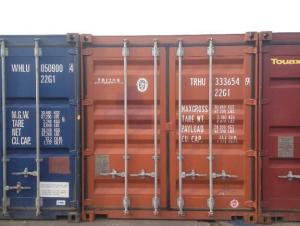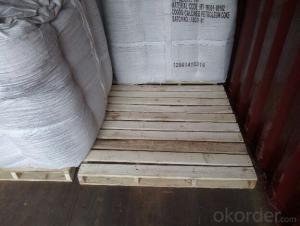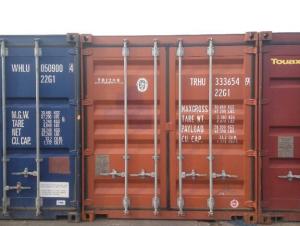Calcined Pitch Coke for Steel-Making company
- Loading Port:
- Tianjin
- Payment Terms:
- TT OR LC
- Min Order Qty:
- 21 m.t.
- Supply Capability:
- 8000 m.t./month
OKorder Service Pledge
OKorder Financial Service
You Might Also Like
Introduction
Pitch Coke/Coal Tar Pitch is a kind of black brittleness and blocky piece, lustrously at normal temperature. It has special odour and poisonous and can be easily flame when melting, second-grade inflammable solid.
Pitch Coke/Coal Tar Pitch is obtained from powerfully processed coal tar. Compared to petroleum asphalt, the adhesiveness is better. Coal Tar Pitch is high quality tar production with high fixed carbon. It has excellent adhesion, waterproofing and resistance against seawater, oil and various chemicals. In these properties, it is much better than petroleum asphalt tar.
It can be used to produce painting, electrode, pitch coke, and tar felt. It also can be used as fuel and the raw material of asphalt carbon black.
Features:
The morphology, chemistry and crystallinity of recarburisers have a major impact on the overall casting cost. The combined application and cost benefits, which are derived through the use of Desulco, enable foundries to manufacture castings in a highly cost effective manner.
reduces
Recarburiser consumption
Power consumption
Inoculant consumption
MgFeSi consumption
Furnace refractory wear
Scrap rate
Tap to tap time
Slag inclusions risk
Chill
increases
Casting microstructure
Productivity
Process consistency
Carbon Recovery
Compared with calcined petroleum coke, acetylene coke and
graphite electrode scrap, Desulco yields the highest carbon
recovery and fastest dissolution time
Specifications:
CPC | |||
F.C.% | 98.5MIN | 98.5MIN | 98MIN |
ASH % | 0.8MAX | 0.8MAX | 1MAX |
V.M.% | 0.7 MAX | 0.7 MAX | 1 MAX |
SULFUR % | 0. 5MAX | 0. 7MAX | 1MAX |
MOISTURE % | 0.5MAX | 0.5MAX | 1MAX |
Pictures:



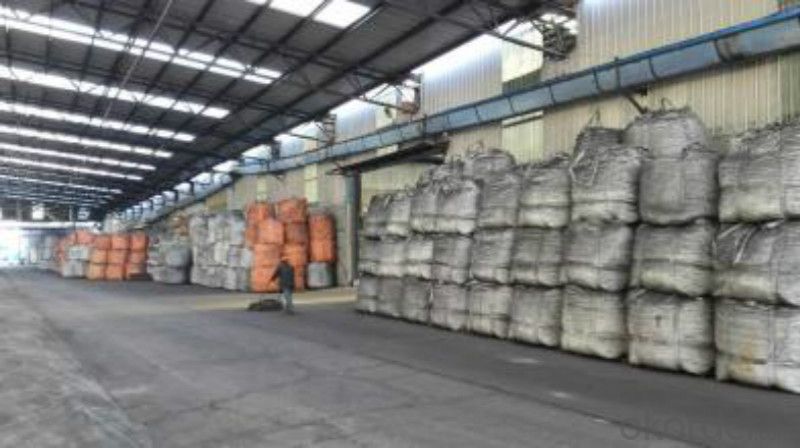
FAQ:
1.MOQ:2 Containers |
2.Size:1-3mm,1-5mm,2-6mm,3-5mm and as the customer's requirement |
3.Packing: 1 ton jumbo bag or 25kgs paper in bag |
4.Payment:T/T or L/C at sight |
5.Delivery time: within 15 days after receiving the deposit |
6.Usage: it is as carbon raiser,widely used in steelmaking,casting,casting iron,steel foundry,aluminum metallury. |
- Q: What are the advantages of carbon-based batteries?
- The advantages of carbon-based batteries include their relatively low cost, abundance of raw materials, and environmentally-friendly nature compared to other types of batteries. Additionally, they have a high energy density, allowing for longer battery life and greater power output.
- Q: How does carbon contribute to global warming?
- The greenhouse effect, caused by carbon, contributes to global warming. When carbon dioxide (CO2) and other greenhouse gases are released into the atmosphere, they trap heat from the sun, preventing its escape into space. As a result, the Earth's surface temperature increases and global warming occurs. The primary cause of carbon emissions is the burning of fossil fuels such as coal, oil, and natural gas for energy production, transportation, and industrial processes. These activities release significant amounts of CO2 into the atmosphere, which accumulates over time and intensifies the greenhouse effect. Deforestation and changes in land use also play a role in rising carbon levels. Trees and plants absorb CO2 through photosynthesis, acting as a natural carbon sink. However, when forests are cleared, the stored carbon is released back into the atmosphere. Additionally, the loss of trees reduces the overall capacity for CO2 absorption, aggravating the problem. The consequences of increased carbon emissions are extensive. Rising temperatures lead to the melting of polar ice caps and glaciers, resulting in sea-level rise and posing a threat to coastal communities. Moreover, carbon-driven global warming disrupts weather patterns, giving rise to extreme weather events like hurricanes, droughts, and heatwaves. To mitigate the impact of carbon on global warming, efforts must be made to reduce carbon emissions. This can be accomplished by transitioning to renewable energy sources such as solar and wind power, enhancing energy efficiency, promoting sustainable practices in agriculture and forestry, and implementing policies that encourage carbon capture and storage. Addressing carbon emissions is vital in combating global warming and its associated consequences. By comprehending the role of carbon in the greenhouse effect, we can work towards a sustainable future that minimizes the adverse effects of climate change.
- Q: What are the long-term effects of increased carbon emissions on ecosystems?
- Increased carbon emissions have significant long-term effects on ecosystems. One of the most notable impacts is climate change, as carbon dioxide is a greenhouse gas that traps heat in the atmosphere. This leads to rising temperatures, altered weather patterns, and increased frequency and intensity of extreme weather events such as hurricanes, droughts, and wildfires. These changes in climate have numerous negative consequences for ecosystems. For instance, rising temperatures directly affect the physiology and behavior of plants and animals. Many species have specific temperature requirements for reproduction, feeding, and survival, and even slight changes can disrupt their life cycles and lead to population declines or extinctions. Furthermore, increased carbon emissions contribute to ocean acidification, a process where the excess carbon dioxide in the atmosphere dissolves in seawater, forming carbonic acid. This acidification has devastating effects on marine ecosystems, particularly coral reefs and shell-forming organisms like oysters and clams. It weakens their calcium carbonate structures and inhibits their growth and reproduction, ultimately leading to their decline. In addition, carbon emissions influence the distribution and composition of plant communities. As carbon dioxide is a vital component for photosynthesis, elevated levels can enhance plant growth and productivity. However, this can also lead to changes in plant composition and the competitive balance between species, favoring certain fast-growing species over others. This can disrupt the delicate relationships between plants and their pollinators, herbivores, and other organisms, affecting the entire food web. Moreover, increased carbon emissions contribute to the loss of biodiversity. Many species are highly specialized and adapted to specific environmental conditions. As habitats change due to climate change, certain species may struggle to adapt or find suitable alternatives, leading to declines or local extinctions. This loss of biodiversity can have cascading effects throughout ecosystems, disrupting ecological processes and reducing the resilience and stability of entire ecosystems. Overall, increased carbon emissions have far-reaching and detrimental long-term effects on ecosystems. They cause climate change, ocean acidification, alter plant communities, and drive biodiversity loss. It is crucial to reduce carbon emissions and mitigate climate change to protect and preserve the health and functioning of ecosystems for future generations.
- Q: How do you remove car carbon?
- 3, running high speed can flush carbon deposition? Running high speed, you can really use the airflow on the airway erosion, wash away part of the carbon deposition. So, if you happen to go out, there are high-speed, national road two choices, you may choose to pull back to speed. But, Ma director thinks, if be in order to "flush carbon deposit" specially, want to run high speed, do not have this necessity. "It is a waste of time, and the cost of oil, extra high speed tolls, the effect is better to do a maintenance 4S shop!" 4, improve the shift speed, such as the original speed 2000rpm shift, modified 2500rpm conversion, generated can prevent carbon deposition, but also to protect the engine? Ma director said, low speed the shift, is often said that the "drag block", the car is easy to knock, the combustion of gasoline is not sufficient to carbon deposition. But it's not necessary for people to increase gear speed - that will increase fuel consumption and cause premature wear of clutch friction plates. So, manual transmission of the car, 1.6 ~ 2.0L displacement, about 2000 rpm shift is more economical, and no need to improve; and automatic car, pay attention not to slam the gas.
- Q: What is the structure of carbon-based polymers?
- Carbon-based polymers have a repeating chain-like structure, where carbon atoms are bonded together to form the backbone of the polymer. These carbon atoms are typically covalently bonded to other atoms or groups of atoms, such as hydrogen, oxygen, nitrogen, or halogens. The arrangement of these atoms and their connectivity determines the properties of the polymer. In addition to the carbon backbone, carbon-based polymers often contain functional groups, which are specific combinations of atoms that can impart unique chemical properties to the polymer. These functional groups can be attached to the carbon backbone at various points along the chain, introducing chemical diversity and modifying the polymer's behavior. The repeating units in carbon-based polymers, known as monomers, can vary in size and complexity. For example, simple hydrocarbons like ethylene can polymerize to form polyethylene, which consists of a long chain of carbon atoms with hydrogen atoms attached. On the other hand, more complex monomers, such as acrylonitrile or styrene, can be used to create polymers like polyacrylonitrile or polystyrene, respectively. These polymers incorporate additional atoms or functional groups, leading to different properties and applications. Overall, the structure of carbon-based polymers is highly diverse and can be tailored to meet specific requirements, making them versatile materials used in a wide range of industries, including plastics, textiles, and electronics.
- Q: Last night to go to the supermarket to buy 5 batteries, see Toshiba carbon batteries, I finally bought the super alkaline batteries, alkaline batteries and carbon is the difference in where? What kind of battery is best for digital cameras? Thank you
- Alkaline capacity, not drip waterThe camera needs to be chargedBuy expensive at the supermarket
- Q: How does carbon contribute to the flavor of food?
- Carbon, in the form of charcoal or charred substances, can contribute to the flavor of food in several ways. Firstly, when food is grilled or roasted over charcoal, the carbon imparts a smoky flavor to the food, enhancing its taste and aroma. This smokiness is particularly desirable in foods like barbecued meats, vegetables, or even certain cheeses, as it adds a distinct and enjoyable element to the overall flavor profile. Furthermore, carbon can also act as a natural filter, absorbing and removing impurities from food and beverages. This filtration process can help eliminate unpleasant odors and flavors, resulting in a cleaner and more refined taste. For example, activated carbon is commonly used in the production of alcoholic beverages like whiskey or vodka to remove impurities and create a smoother, more flavorful drink. In addition, carbon can contribute to the development of desirable texture and color in certain foods. When sugar or other carbohydrates are heated, they undergo a process called caramelization, where the sugars react with heat to form a complex mixture of carbon compounds. This caramelization process creates rich, golden-brown hues and a unique depth of flavor, enhancing the overall taste experience. Lastly, carbon can also play a role in the fermentation process, which is essential in the production of various foods and beverages. During fermentation, microorganisms consume sugars and release carbon dioxide, which contributes to the texture, flavor, and carbonation of the final product. This is particularly evident in bread, beer, wine, and other fermented foods where the presence of carbon dioxide adds lightness, complexity, and effervescence to the flavor profile. In summary, carbon contributes to the flavor of food through its ability to impart smokiness, act as a natural filter, facilitate caramelization, and participate in fermentation processes. Its presence in various forms enhances the taste, texture, and overall enjoyment of a wide range of food and beverages.
- Q: What is the melting point of carbon?
- The melting point of carbon is determined by the form in which it is discovered. There are several forms of pure carbon, such as graphite and diamond. Graphite possesses a melting point of about 3,600 degrees Celsius (6,500 degrees Fahrenheit), whereas diamond has an even higher melting point of roughly 3,827 degrees Celsius (6,920 degrees Fahrenheit). The reason for these elevated melting points lies in the robust covalent bonds between carbon atoms in these structures. However, it is crucial to acknowledge that carbon can also exist in amorphous states, like coal or charcoal, which lack a specific melting point since they undergo a gradual decomposition process upon heating.
- Q: What is carbon offsetting in the hospitality industry?
- Carbon offsetting in the hospitality industry refers to the practice of taking actions to compensate for the greenhouse gas emissions produced by a hotel or resort. This can involve investing in projects that reduce or remove carbon dioxide from the atmosphere, such as renewable energy initiatives or reforestation efforts. By offsetting their emissions, the hospitality industry aims to reduce their environmental impact and contribute to the global fight against climate change.
- Q: What are the effects of carbon emissions on the stability of river systems?
- Carbon emissions have significant effects on the stability of river systems. The release of carbon dioxide and other greenhouse gases into the atmosphere contributes to global warming, which in turn affects the hydrological cycle and leads to changes in river systems. One of the primary effects of carbon emissions on river systems is increased water temperature. As the planet warms, the average temperature of water bodies, including rivers, rises. Higher water temperatures have detrimental impacts on aquatic ecosystems, leading to reduced oxygen levels and increased susceptibility to disease for many species. This can result in the decline or even extinction of certain fish and other aquatic organisms, disrupting the delicate balance of river ecosystems. Furthermore, carbon emissions contribute to the melting of glaciers and polar ice caps, leading to an increase in water volume in rivers. This can cause river systems to experience more frequent and severe flooding events. The excess water can erode riverbanks, leading to the loss of valuable land and infrastructure. It can also result in the displacement of communities living along riverbanks, exacerbating social and economic issues. Additionally, carbon emissions contribute to the acidification of water bodies, including rivers. Increased carbon dioxide in the atmosphere leads to higher levels of dissolved CO2 in rivers, forming carbonic acid when combined with water. Acidic water can harm aquatic life, particularly organisms with calcium carbonate shells or skeletons, such as mollusks and certain types of plankton. This can disrupt the food chain and have cascading effects on the entire river ecosystem. Overall, the effects of carbon emissions on the stability of river systems are profound. Increased water temperatures, flooding events, and acidification pose significant threats to the biodiversity and ecological balance of rivers. It is crucial to mitigate carbon emissions and adopt sustainable practices to preserve the stability and health of these vital ecosystems.
Send your message to us
Calcined Pitch Coke for Steel-Making company
- Loading Port:
- Tianjin
- Payment Terms:
- TT OR LC
- Min Order Qty:
- 21 m.t.
- Supply Capability:
- 8000 m.t./month
OKorder Service Pledge
OKorder Financial Service
Similar products
Hot products
Hot Searches
Related keywords














